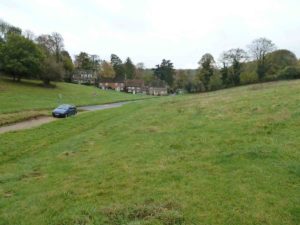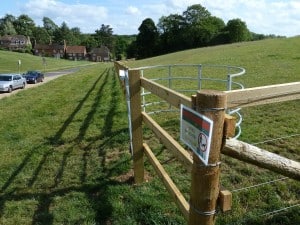Support us from £3/month
We deal with almost 1000 cases a year assisting communities, groups and individuals in protecting their local spaces and paths in all parts of England and Wales. Can you help us by joining as a member?
Chorleywood Common is an amazing place. Within a mile of the M25 and surrounded by roads and railways, it survives as a wild oasis, breathtakingly lovely with its wide open spaces and mixed woodland. It is a reminder, in miniature, of our pre-inclosure landscapes. It is enjoyed by walkers and riders, residents and visitors of all ages and is fiercely defended by local people.
Not surprising then that the parish council’s plans to fence the common for grazing are deeply controversial. The parish council owns the 76-hectare common and has produced a management plan, one of the aims of which is to extend the area of chalk grassland by reducing encroachment by scrub. It is a superb habitat for wildlife, and grazing may be the best solution—but if that means fencing it needs very careful consideration indeed.
Last year the council erected temporary fences and grazed Lark Meadow, open grassland which slopes down to Dog Kennel Lane. It did not have consent from the Planning Inspectorate under section 38 of the Commons Act 2006 so the fencing was unlawful. However, it applied for such consent and then withdrew the application in the face of opposition. It is now hoping to erect temporary fencing for up to 12 weeks a year under the Commons Act’s exemption scheme.
Lark Meadow is a popular part of the common, people cross it to go to the railway station, in winter it is ideal for tobogganing, and on windy days for kite flying. The society considers that it would be wrong to fence this open landscape which is loved by so many.
We suggest that if, after full consultation with all interests, grazing is considered essential, the council should look at alternative ways of grazing the land. It should investigate slowing the traffic on Dog Kennel Lane, with cattle-grids at both ends, using the most placid of breeds, and employing a stockperson to keep an eye on the animals. Fencing should be absolutely the last resort.
But we do not feel there has yet been sufficient consultation with, and involvement by, all the interests. The council needs to follow the procedures set out in A Common Purpose and our own Finding Common Ground to achieve the best solution for this unique place.
Would you like to support our work in finding the best solution for managing commons? If so, please join us here.


